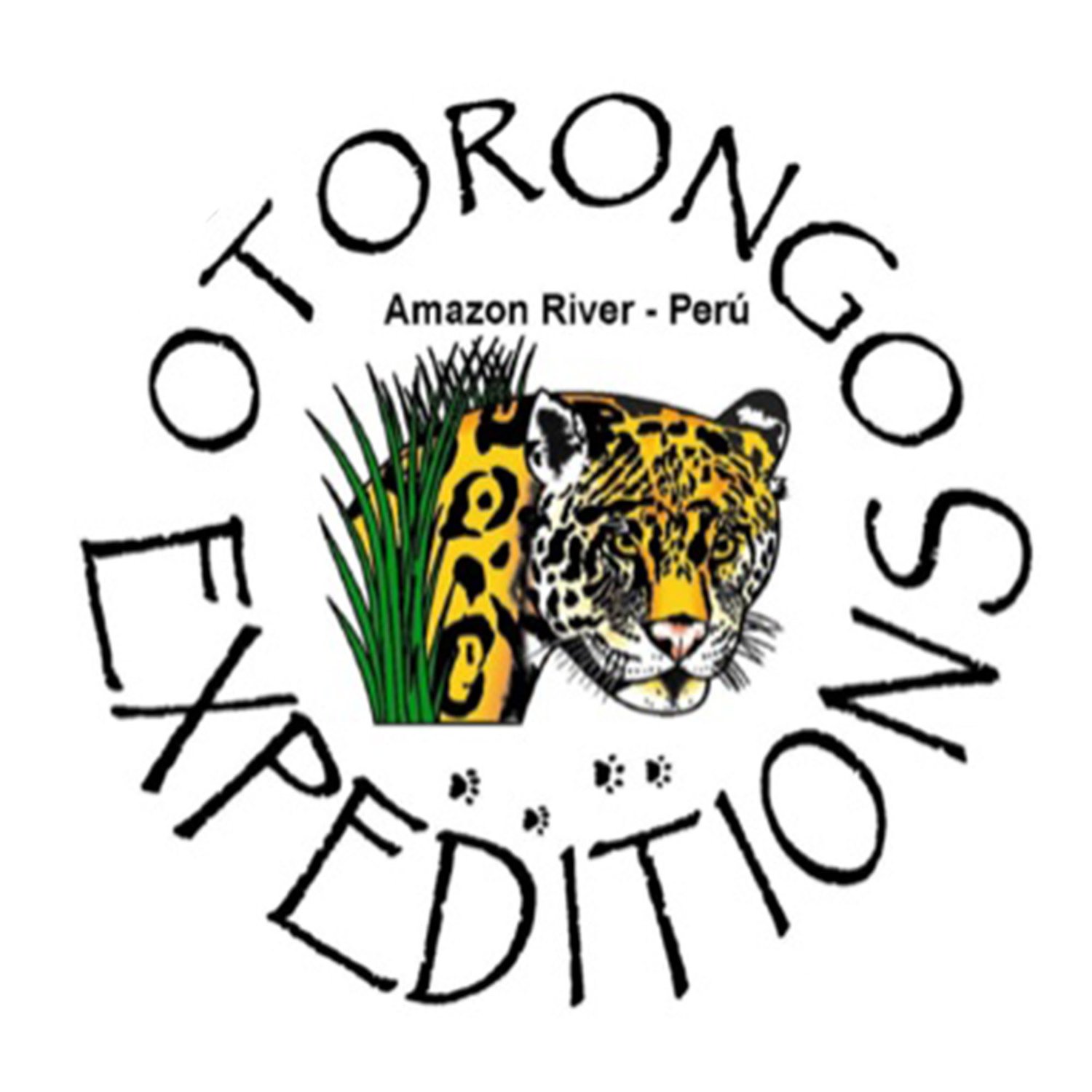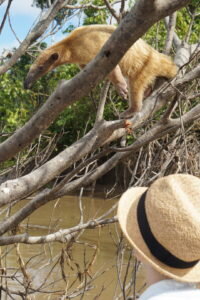Flood season, the most wonderful time of the year
Firm feet, no slipping!
Red alert Napo River flooding
Wildlife watching in Peru
Ant-Eater close to water
Amazon wildlife reserve
Why is the flood season the most wonderful time of the year? Well, for mobility reasons and the ability to float silently through the Varzea flooded forest, basically just below the tree tops. The experience of drifting in the tea colored waters observing wildlife is one of a kind. We are that much closer to the sloths, monkeys and canopy birds that it seems unreal! There is no comparison to this activity, the advantage is huge for wildlife watchers. Keep your hands in the boat though, a good percentage of the trees and palms have sharp spikes there to protect their trunk and fruits. Only the most specialized of animals can maneuver those three trunks.On a daily excursion into the Varzea, we can see hundreds of birds specialized for the area. Probably the coolest thing the creep up on is a group of howler monkeys who are politely reminding everything about their territorial range. We can see anacondas, iguanas or caiman lizards sunning themselves on an isolated patch of sunlight that has filtered through the dense canopy. The Iguana and Caiman Lizard are more likely to nosedive in the dark water when approached but the anaconda will usually wait out a possible threat or a potential meal.Sloths, and tamanduas are another common sight while exploring the Varzea. If you are lucky enough, we may run into a sloth who is changing trees but not by climbing, by swimming. Yes sloths are actually great swimmers! Some of their prehistoric ancestors were partially aquatic. They can swim for miles, trying to cross the world largest river! The Tamanduas are normally in the treetops though, feeding on ants and termites that inhabit hollow timber or the hollow branches of the cecropia tree. That doesn’t mean we can’t see them at ground level, (which we do see often just around our lodge on night hikes).One great advantage for our guests is the ability to float into normally hard to reach areas like our Fossil Creek Wildlife Reserve. There are several points on the way there that reveal intimacies of the Varzea habitat.
For me, it is hard to top, sneaking up into a flooded lake silently to see what animals may be going about their business. Herons, caimans, horned screamers, monkeys and many other organisms are just going about their daily routine. Paddle quietly and the forest will come alive before your eyes. Troops of squirrel monkeys make quite a ruckus as they migrate on the lake’s edges searching for fruits and insects to feed on
Flooded forest cruise birdwatching
Termite island
Pink dolphin watching
Specialized catfish for the flooded forest
Bosque Varzea del Rio Napo
Some Natural history notes of flooded forest and its inhabitants.Our seasons are broken up into two categories, the rainy season and the dry season. Our rainy season is from Nov to June, the “Dry” season is July to October. Apart from having more or less rain, the main distinction of the seasons is actually the water level which is not controlled by local rains. The water level is controlled by the amount of rain that falls on the eastern edge of the Andes and gets funneled through the basin and bottlenecked as it passes Iquitos. We can see in the charts from the National Hydrography Service and predict the water levels, six- nine weeks ahead of time. That is about how long it takes a drop of water fallen in the mountains to reach the bottleneck of Iquitos.After the bottleneck, the water spreads out into the “Varzea” (white water flooded forests) where it nurtures lowland soils and flora. In some areas. There can be 30 miles or more of this flooded forest on the margins of the Amazon. These flooded forests act as nurseries for the aquatic life in the Amazon. Numerous fish species will breed and lay eggs in the periphery of the lowland, swimming up swollen creeks or swimming to the confluences to spawn. The volume of water makes this a great time for these yearling fish to grow. They have plenty of space and area to hide in the tangles of vines which are submerged by the floodwaters. It is much harder for predators to catch small fish in the tremendous volume of water.Not only fish depend on this flood cycle, but a unique species of River Dolphin as well. The famous Pink Amazon River Dolphin has evolved together with this flooded forest in the past 5 million years. The Pink dolphin is so specialized to swim in tangled messes that it has extra vertebra in its neck so it may swivel its head around knotted lianas and buttressed roots. That’s not the only adaptation the Pink dolphin has for the flooded forest. They also have a reduced dorsal fin which allows them to navigate tight spots without the fin to get in the way. Another adaptation are their autonomous flippers which can rotate in circular motions independent from the other. This gives them a very important advantage for maneuvering in the flooded forest to catch prey items.The health of fish and animal populations in the Varzea are directly tied to the amount of fruits that fall from the trees. When the forest is healthy, the water reeks of rotting fruits. The aroma in the water can be detected from very far away by fish like the Gamitana, Sabalo and Red-tail catfish. These fish can be found near the producing trees and they barely let the fruit penetrate the water before it is gulped down by a fish. The red-tail catfish can be considered a seed dispersal agent because it does not chew and destroy the seeds, leaving them viable for growth after defecation.Us and the Future of our DistrictThere is a lot of details that we are constantly learning about these ecosystems. There is a lot of things we do not know as well. The forest is being dropped at record speed, flooded Varzea as well as terra firme. The goal of our business is not a tunnel vison “make money money make money money money!” We invest a very large portion of our business into sustainable development of the district of Las Amazonas. Our local staff if priceless to us as well as the forest that surrounds us. Our goal is to give value to healthy standing forests as is and not as material to be sold. This idea is why it is so important to hire local people who would otherwise become part of the extractive resource economy, felling trees and selling wildlife. Our staff of 15 locals from Oran and the surrounding communities is an integral part of our operation as they spread the word about the value of healthy forests for the future.Dont wait! Book a trip with us now! You will not regret it!












